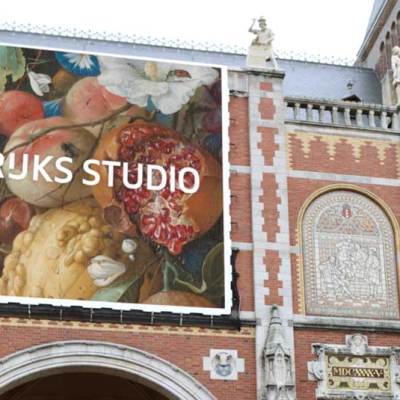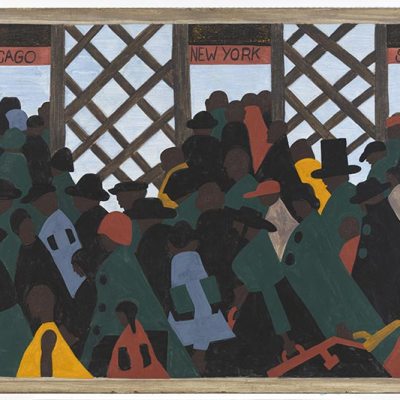From the February issue of Apollo: preview and subscribe here
In February 2008, I took a deep breath and asked the President of the University of Manchester for a million pounds to begin the transformation of the Whitworth Art Gallery. Professor Alan Gilbert sadly passed away in 2010 and so won’t get to see the remarkable expansion his wise initial investment has enabled. But six years later, with a further £8.5 million from the Heritage Lottery Fund and millions more from Arts Council England, the Clore Duffield Foundation and many other public and private donors, we are about to unveil a £15 million project that provides a Whitworth for the 21st century. Two new wings extend into the surrounding park, creating between them a garden for displaying art. There are glorious new exhibition spaces, study and collection centres, a learning studio and, better to appreciate the green space around the gallery, a café in the trees. The whole thing is a rather bigger venture than I’d anticipated in my early conversations with Professor Gilbert.
Manchester has always been an ambitious city. The Whitworth was founded in 1889 to be a gallery to rival those in London, as well as inspire the local population to value culture. One of the founding gifts, from Manchester Guardian owner John Edward Taylor, included 266 drawings and watercolours, among them 22 works by Turner and William Blake’s The Ancient of Days. We’ll be showing a mass hang of the best of them as part of the reopening programme.
The gallery was also intended to inspire the local textile designers who helped make Manchester’s fortune. They have a dedicated gallery space here at the Whitworth, reflecting their centrality in the city’s industrial past. Contemporary art has always played a key role. In fact two of the earliest acquisitions were contemporary textiles – William Morris and Edward Burne-Jones tapestries, Flora and Pomona. After the Whitworth became part of the University of Manchester in 1958, a tremendous enthusiasm for the contemporary brought works by Lucian Freud, Francis Bacon, Peter Blake, David Hockney, Bridget Riley and Richard Hamilton into the collection (when they were still affordable for a public art gallery). When we reopen on 14 February, we will show these and an artist of our own time, Cornelia Parker.
Cornelia is a remarkable artist, best known for Cold Dark Matter: An Exploded View, the domestic shed exploded by the British Army that we’ll display in one of the new exhibition galleries. She has taken our Blake works as inspiration for new work in which Bunhill Fields and Jerusalem – Blakeian sites – make their presence felt. In a collaboration that could only happen on a campus like the University of Manchester, Cornelia has also worked with the Nobel Prize-winning physicist Kostya Novoselov. Having extracted a flake of graphite from one of Blake’s drawings, Kostya then made this into graphene, which will trigger Blakeian Abstract, a ‘meteorite shower’ devised by Cornelia for the opening night.
As much as directing the Whitworth has been a life-changing experience, it hasn’t been my only challenge and joy in Manchester. In 2011 I was asked to direct Manchester Art Gallery, the other major art institution created by the city’s Victorian philanthropists. There I look after the great Pre-Raphaelite collection, the Dutch oils and the terrific modern art and decorative arts collections. At Platt Hall, which houses the Gallery of Costume, I also take great pleasure in a collection of clothes that people of all classes actually wore, from workwear to high fashion.
Running two institutions might seem greedy, or at least a bit of a tall order, but as director of both I’ve been able to help each play to its distinct and unique strengths. We’ve also been able to work together on projects that are bigger than either gallery could achieve alone. In 2012 ‘We Face Forward’, an exhibition of 33 contemporary West African artists, made itself felt across the globe, as we hoped it would, reaffirming the two centuries of trade and connection between West Africa and Manchester (the textiles again).
So on 13 February, when we host our preview, I will have taken advice from my textiles colleagues about the best threads to wear to celebrate a gallery and a city that has always been culturally and sartorially sharp. It is part of a bigger Mancunian story about culture driving post-industrial regeneration – with the Whitworth, the new Central Library and the soon-to-open HOME contemporary arts centre being only the latest instalments. This is also my city, and I’ve raised my children here: I feel tremendously privileged and excited to be part of making Manchester a dynamic, sassy and cultural place to live.
Click here to buy the latest issue of Apollo
Related Articles
12 Days: Imelda Barnard picks some likely highlights of 2015

